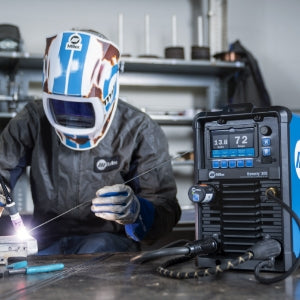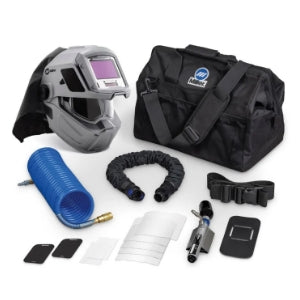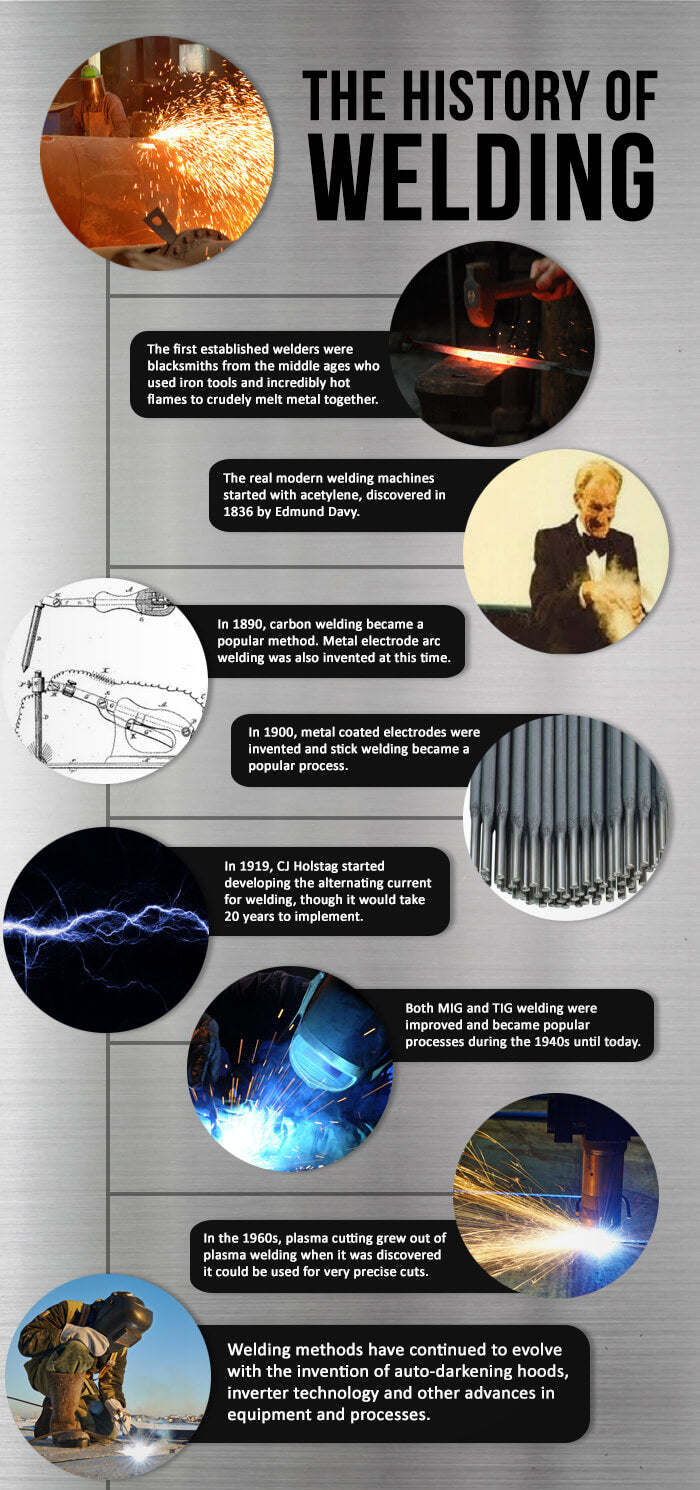Like microwaves, smartphones, and liposuction, galvanized steel is one of those modern miracles. Its protective zinc coating keeps it from corroding at a cheaper cost than stainless steel. However, this luxury comes at a price.
Galvanized steel produces toxic fumes. How toxic? Raiders Of The Lost Arc, face-melting toxic. Seriously. First you feel like you’re going to die, and then you actually might. So before you just start wingin’ it, here are some expert tips to show you how to weld galvanized steel safely.
What is Galvanized Steel Welding?
Galvanized steel welding refers to the process of joining two pieces of galvanized steel together. Galvanized steel is essentially regular steel that has undergone a galvanizing process, which involves coating the steel with a protective layer of zinc. This zinc coating serves a dual purpose: it helps protect the steel from corrosion and rust, and it provides an added layer of strength and durability. However, the very property that makes galvanized steel desirable, its zinc coating, can make welding it a bit more challenging.
When heat is applied to galvanized steel during the welding process, the zinc coating produces zinc oxide fumes. While these fumes can be harmful if inhaled, proper techniques and safety measures can allow for safe and effective welding of galvanized steel. The goal during galvanized steel welding is not only to ensure a strong bond between the two pieces of steel but also to minimize the production of harmful fumes and ensure the safety of the welder.
It's important to note that while the welding process for galvanized steel may be similar to welding ungalvanized steel, the safety precautions and preparation needed are more intensive due to the presence of the zinc coating. Therefore, whether you're an amateur or a professional, understanding the specifics of galvanized steel welding is crucial to ensuring both a successful weld and your own safety.
Galvanized Steel Welding Best Practices
Like we said, galvanized steel fumes aren’t something to mess around with. The first thing you need is proper galvanized steel welding ventilation for yourself. We’re talking hoods with their own ventilation system to remove galvanized steel welding hazards.
The Optrel E3000 has a great track record, filtering out 99.8% of galvanized steel welding fumes that'll mess you up. The next step is ventilating your workspace, because that poisonous smoke will embed itself into your walls if you let it.
The best system is to weld galvanized steel in the great outdoors, with Mother Nature as your ventilation system. Of course, with rain, wind, and the lack of access to electricity, welding outside isn’t always an option.
When welding in a workshop, get as much air flowing through your workspace as possible. This includes opening doors and windows. Renting a swamp boat for its giant fan is a possible option as well if it’s in the budget. Or, for a much more efficient, cheaper choice, get yourself a portable ventilation system.
Our favorite ventilation system is the Lincoln Miniflex Fume Extractor which fits just about anywhere you need and saves you about $3,500 compared to most of your workshop fume extractors. Or, if you're looking for something that'll really clear the air for big welding projects, we'd suggest the Miller Filtair MWX-D Fume Extractor.
When you’re consistently welding galvanized steel, a fume-extracting system is something you’ve got to have. Otherwise, you’ll end up with a big “Biohazard” sign being slapped to your workshop and talking like one of those guys from the nineties anti-smoking commercials.
Galvanized Steel Welding Tips
Galvanized steel is just normal steel coated with a thick layer of zinc. While this protective layer keeps it from corroding, it also protects the steel quite well from being welded. If you’re planning on MIG or TIG welding, you’re almost always going to need to grind off the galvanized layer where you’re welding.
The only exception might be using a deeper penetrating rod with stick welding that goes right through the layer. However, the resulting bead often isn’t pretty as the zinc coating causes more spatter than normal. Keep in mind that grinding won’t get rid of all the zinc, so you’ll still need proper protection.
As for the welding method, once the zinc coating is removed and you’re using the proper galvanized steel welding safety techniques, you can weld galvanized steel just as you would normal steel. When you’ve finished your weld, leave your workspace before removing your mask and give the area plenty of time to air out.
With these proper galvanized steel welding procedures, you’ll be able to skillfully weld galvanized steel without your face melting off and/or dying. Let us know what tips have helped you work with galvanized steel in the comments section below.







